In this episode of the eLife podcast we hear about echolocation, bacteriophages, babies and pain, a neural code for food abundance, and how zebrafish can make their own sunscreen.
In this episode
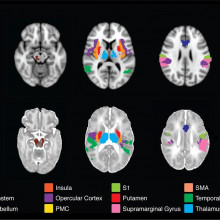
00:29 - Do Newborn Babies Feel Pain?
Do Newborn Babies Feel Pain?
with Rebecca Slater, Oxford University
Historically, opinions on whether new-born babies can feel pain have been divided, with  some arguing that the neonatal brain is far too immature to consciously process sensations of discomfort. But because babies can't communicate their feelings, this has been a hard nut to crack. Now with the help of some willing parents, a brain scanner, and a device that delivers a sensation a bit like being poked with a pencil, Oxford University's Rebeccah Slater reckons she's a step closer to the answer.
some arguing that the neonatal brain is far too immature to consciously process sensations of discomfort. But because babies can't communicate their feelings, this has been a hard nut to crack. Now with the help of some willing parents, a brain scanner, and a device that delivers a sensation a bit like being poked with a pencil, Oxford University's Rebeccah Slater reckons she's a step closer to the answer.
Rebecca - Lots of parents say, "Isn't it just obvious that babies feel pain?" but actually, it's more complicated because the main way that babies communicate is by crying or facial grimacing. But of course, they'll do that whether they're hungry or whether they're cold, or whether they're in pain. So, just because a baby's crying, it doesn't necessarily tell you whether they're experiencing pain. So, in fact, it used to be thought that babies didn't experience pain and that most of the responses that you could see were just reflexes.
Chris - And is this the reason why historically there are case reports of babies undergoing, in some cases, quite significant surgery without really any proper anaesthesia.
Rebecca - That's right. So, because it was thought that babies couldn't experience pain and people were very worried about the side effects of things like anaesthesia, they tended not to provide the amount of pain relief that would be given adults or even older children.
Chris - So, how did you try and probe this to find out what was really the experience of an infant when it was subject to a painful stimulus?
Rebecca - We used functional magnetic resonance imaging in order to look at the brain regions that are activated when a stimulus is applied to the baby that an adult would describe as mildly painful. We made an assumption here, but because we know the areas of the brain that are active in an adult, that if we saw the same areas of the brain active in a baby then we could assume that the baby might be having some of the experiences that an adult would have. And this is particularly interesting because not only is pain a sensory experience and by that I mean, you know where on the body it happened or how intense the stimulus is, it's also an emotional experience related to unpleasantness. And so, we wanted to see if some of the brain regions that were involved in the more emotional side of the experience might also be active in a baby.
Chris - What did you find - were they?
Rebecca - They were. 18 of the 20 brain regions that are active in the adult were also active in the baby, suggesting that babies do have the capacity to experience pain in a similar way to adults.
Chris - Brain scanners are not noiseless, comforting, kind of relaxing environments in which to exist. I've been in one. How do you dissect away the effect of being disentangled from a parent, prodded, and then strapped down in the scanner, away from any signals of pain physically applied by you to these infants?
Rebecca - So, in adults, you are very confounded by lots of these phobias, things that you've just described. Such as the anticipation and perhaps, even some people might find it a little bit claustrophobic. But in a baby, they really don't have very much sense of their environment outside their immediate zone. So, if they are carefully wrapped and protected by the mum and often put to sleep by the mum, I don't think they're actually aware that they're going into the actual scanning environment.
Chris - You found that of 20 regions which are routinely active in an adult brain that's experiencing a painful stimulus, 18 were active in the baby. What about the two that are missing then?
Rebecca - One of them is called the orbito-frontal cortex and that's part of the brain that's involved in processing decision-making and sort of helps us with what we're going to do with the information. The other one is called the amygdala and quite often, this is associated with fear. One of the reasons why these areas might not be active in a baby is that they don't yet have the capacity to have a rational decision about all of the experiences that they're having. It might be a little bit less developed than some other senses, because in the womb babies really aren't exposed to any pain. So, there would be no need for these complex responses to be developed in a sensory environment where you're very protected.
Chris - And when do you think these circuits actually begin to switch on?
Rebecca - So, at the moment, the study that we've been doing has been done in healthy term babies. However, some previous work that we've done, we've used EEG and this is where you can look at the electrical activity in the brain and what we've found is that it's not until up about 35 weeks gestation where they can actually have a discriminative brain pattern between tactile stimulus, so if you were touched, versus something painful. Prior to that time, the activity in the brain seems to be very similar regardless of whether you're having a painful or a non-painful event happening to you.
Chris - Rebecca Slater, from Oxford University. And don't worry, no babies were harmed in the making of that study.
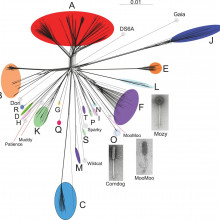
05:51 - Phage diversity: a cast of thousands...
Phage diversity: a cast of thousands...
with Graham Hatfull, University of Pittsburgh
Viruses are parasites that need to hijack cells to replicate themselves. We've always  suspected that in doing so, they've probably also played a key role over evolutionary time in helping to shuttle genetic information both between cells and amongst themselves. Now a study of a group of viruses called bacteriophages, which target bacteria, shows that this is almost certainly true, as Graham Hatfull explains.
suspected that in doing so, they've probably also played a key role over evolutionary time in helping to shuttle genetic information both between cells and amongst themselves. Now a study of a group of viruses called bacteriophages, which target bacteria, shows that this is almost certainly true, as Graham Hatfull explains.
Graham - Bacteriophages which are viruses that infect bacteria, are incredibly numerous in the environment. They outnumber all other forms of life together. So, the question we wanted to address is: what is the genetic diversity of all of that information out there?
Chris - Where were you looking, specifically?
Graham - It's known that bacteriophages are very specific for their hosts, and so we chose one particular bacterial host, Mycobacterium smegmatis, and just tried to isolate the large number of bacteriophages to sequence their genomes and then compare them. And so the viruses themselves are recovered from environmental samples like soil, compost.
Chris - How do you actually extract the phages? Because I can understand if you were to go to the environment sample and then try and expand them in the laboratory, you might end up with a bottleneck there because you only select for some of them that will grow in your lab dish.
Graham - Yeah. It's a great question. And yes, it's possible that there are some phages out there that we'll miss but at least we're comforted by, in this case, using a large number of samples that have been extracted from essentially right across the United States.
Chris - To build a sort of giant family tree for this particular group of phages?
Graham - Yes. In fact, the interesting thing is that if you try to build family trees out of bacteriophage genomes, you run into an interesting conundrum. And what we find from doing the comparison is that these genomes are constructed mosaically. So, they're put together in pieces just like the Romans would build their beautiful artwork by using mosaic tiles - little pieces of stone with different colours. These phage genomes are built of segments, each segment sometimes being a single gene. Each of which has a different evolutionary history. That's an interesting finding and it means that you have to be careful about reconstructing a phylogeny, a strict phylogeny, based upon the whole genome. Because in fact what you have is an assemblage of maybe 50 or a hundred separate phylogenies which describe the evolutionary history of all the segments of that genome.
Chris - Is this arrived at through multiple infections of a single bacterial cell by multiple phages which then just basically do pick and mix for genetic segments between themselves, and then you arrive at whole host or a whole handful of new phages which have reassorted themselves effectively.
Graham - Right. And we certainly imagine that these events have been going on over a long period of evolutionary time. What is less clear is who all the participants are in this big orgy of recombination. It certainly could be phages recombining with each other, but it also could be phages recombining with resident phages that are sitting as part of bacterial chromosomes, or just with bacterial DNA itself. We suppose that the mechanism that gives rise to this process is actually an illegitimate recombination process that doesn't require the genes to be really similar to each other in order to be able to exchange. And although that might happen at low frequencies, it's also likely to be a very creative process, putting new pieces of DNA next to each other that wouldn't usually be next to each other.
Chris - And does this mean that just because you've looked at these bacteriophages that go for Mycobacterium smegmatis, that actually they could be stealing bits of phages from right across the world of phages and right across the world of microorganisms in general? And just their acting as almost like vectors, shuttling genes around all over the place.
Graham - Right. And this is exactly the kind of question that we're trying to get an understanding into. When we look at these large numbers of phages that we've sequenced, we see lots of different types. So, if they can all infect the same host, Mycobacterium smegmatis, how come it doesn't appear as though they've been exchanging more DNA with each other? So, the hypothesis would that different phages are essentially evolving by migrating across the microbial landscape, essentially changing the host that they want to infect on a regular basis. And as they make that pathway, that journey across the bacterial landscape, they essentially encounter new and different aspects or components of the gene pool with which they can essentially dip into and exchange genes and pick them up. And so that's a way in which phages can be constantly picking up vectoring and carrying around across the microbial landscape.
Chris - Graham Hatfull from the University of Pittsburgh. And the eLife paper that Graham was discussing is also a breakthrough in another way, as he revealed to me at the end of our conversation. And Graham, how many authors are there on this paper?
Graham - There's a total of 2,863, of which 2,644 are undergraduate students that participated in the isolation and the genomic analysis and the annotation of the genomes. I think that's a world's first for the total number of undergraduates on a paper. I believe the Higgs-Boson paper has the record, about 6,000 authors, but I think we're not far behind and it's mighty fine company to be in the midst of.
Chris - It certainly is and congratulations to the team.
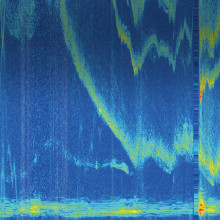
11:46 - Whales focus their echolocation sounds
Whales focus their echolocation sounds
with Danuta Wisniewska, Aarhus University
A number of creatures use echolocation, bouncing sound off structures to catch prey. Bats are one example but they do most of their hunting at close range. So, projecting sounds over long distances isn't really a priority for them, but it is for toothed whales and their relatives which need to find prey and then close in on it from far away. So, this means they have a problem. To accurately locate something at a distance, you need a tightly focused beam of sound. But as you get closer, you need a wider beam to stop things being able to get away. So, how do they do it? From Aarhus University, Danuta Wisniewska...
Danuta - Toothed whales, sperm whales, dolphins, and porpoises use echolocation to hunt. They produce a sound and then they listen to reflections of those sounds. And when they do that, they direct the sound energy into a very narrow beam so the energy can reach further ranges. However, that is not very suitable for tracking fish or squid at very short ranges because the area covered by that beam will be very small and so prey could easily escape.
Chris - Indeed, because as the whale homes in on the thing it's trying to catch, because this beam is spreading out from a small point to a broader point at a distance, as it got close then it would be very easy for the prey to just swim out of the beam, wouldn't it?
Danuta - Yes. It's like a flashlight with an adjustable beam. When you want to look for something farther away, you will use a narrow beam because at long ranges it will still cover a large area so you'll find your car or your door. As you get closer, if you want to then find the hole for the key, you would adjust the beam so that it covers a great area because otherwise you would have to scan back and forth to find that small object.
Chris - And is that what the whales actually do? Do they have the ability to adjust the size and, I suppose, the relative rate at which the cone spreads out in accordance with how far or close the prey item is in order to compensate for this effect?
Danuta - Yes. That is what we found in my study.
Chris - So, how did you do it?
Danuta - We recorded porpoises catching fish in front of an array of hydrophones, that is underwater microphones. We threw a fish in front this line of hydrophones and asked animals to catch it, and then we saw that as the animals got closer to the fish they increased the beam.
Chris - Now, obviously, the question is if they have the ability to focus this sound in this way - how do they do it? First of all, where do they make the sound? And second, how can they adjust the way in which the cone of sound spreads out like that?
Danuta - Toothed whales do not produce sounds in the larynx like most mammals would do. Instead, they produce sound in their nasal passages. They have structures called phonic lips. As they push air past those phonic lips they produce sound.
Chris - This would be the blow hole, wouldn't it?
Danuta - Yes, exactly. The phonic lips sit in the blow hole. They passed air through it as if they were breathing but there's an air sac above those phonic lips just below the lip of the blow hole. Air is accumulated in that air sac and when they run out of air underwater, they will suck that air back in and reuse it. So, they recycle the same air to produce sound.
Chris - And the sound comes out of this series of phonic lips in the blow hole, how does it then get focused into that cone which you beautifully point out is very similar to shining a flashlight into the dark? How do they do that?
Danuta - The vibrations from the phonic lips is coupled into a fatty structure that is in front of their head, called the melon. That melon makes the bulbous shape of a dolphin head.
Chris - How does it achieve that change in focus of the sound beam then?
Danuta - In principle, there are two ways of doing it. You could either change the frequency of the sound. Another way of doing it is to change the size of the structure that radiates the sound. In this case, that would be the melon.
Chris - And which do the whales resort to? Do they change frequencies or do they adjust the shape in the front of their head to do this?
Danuta - Porpoises don't change the frequency of their signal significantly. We found that even without changing frequency, they tend to change their beam, meaning that they have to do it by changing the size of the radiating structures.
Chris - But, anatomically, are they endowed to do that? What structures could they employ in order to change the shape of the fat because you'd need to quite literally adjust the shape of the fat structure, wouldn't you? In order to change the shape of the sound cone that's coming out of their head.
Danuta - Yes. It's above the melon and the air sacs around the melon are surrounded by muscles. And these are the same muscles to our facial musculature. They are heavily innervated. Porpoises actually have 4.5 times more neurons in the facial muscles than humans do. And what is special about facial muscles of primates is that we can make all those facial expressions because we have so much control over our muscles. Porpoises with the network of muscles, neurons around their melons should be able to do even more.
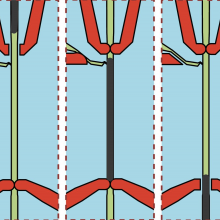
17:01 - Food On The Brain
Food On The Brain
with QueeLim Ch'ng, Kings College London
We've known for a long time now that diet influences longevity and that the nervous  system is involved in some way. What QueeLim Ch'ng wants to find out was how? Working on worms, he's tracked down how the availability of food affects gene expression in certain subsets of neurons which in turn alter the physiology of the entire animal.
system is involved in some way. What QueeLim Ch'ng wants to find out was how? Working on worms, he's tracked down how the availability of food affects gene expression in certain subsets of neurons which in turn alter the physiology of the entire animal.
QueeLim - The point of the study was to look at this long standing problem which that people have known that diet influences longevity and lifespan. And there were hints that the nervous system was involved. What we wanted to do was to pinpoint what the nervous system was exactly doing. So, we did this by studying two genes, both of which are important in hormonal signalling in the nervous system. One of them is called tph-1, the gene that's important for making serotonin. The other gene is called daf-7. Daf-7 makes a hormone called, TGFß, which is important in many different processes throughout the body.
Chris - So, why did you leap on those two genes initially?
QueeLim - There were some hints from work from many labs that suggested that these genes were important in food related processes. But the precise effects were not very clear.
Chris - So, how did you study them?
QueeLim - So, we want to look at these genes in greater detail than was ever done before. This required a very close collaboration with an engineer, Hang Lu, that designed the system that allowed us to look at lots of animals at once to determine how these genes come on and off. And by looking at very large populations of animals, we could actually measure how accurately these genes came on and off as the environment, such as food, was changed.
Chris - Which animals were you studying?
QueeLim - Obviously, we can't study people. So, we studied tiny little worms called C. Elegans. And C. Elegans is really cool, it's a very famous organism because it's already gotten three Nobel prizes and it was the first organism to have the whole genome sequenced. From their result, we actually know that C. Elegans shares a lot of genes with humans. And in fact, these two genes I talked about tph-1 and daf-7, their counterparts in humans are actually very important for metabolism and they also act in the brain.
Chris - So, the fact that you've got, albeit, a worm, what you're going to find from this worm is likely to be relevant to people anyway, isn't it? And what is the process that you've now identified? So, what is the relationship, I suppose, I'm asking between the provision of food and food of different types, and the activity in these genes?
QueeLim - One major advantage of studying this little worm, C. Elegans, is that the entire nervous system has been figured out. We know the identity of every single nerve cell. And so, that allows us to focus on specific known nerve cells with known connections and known functions. And so, what we did was we looked at the expression of these two genes in three specific pairs of nerve cells. By looking at lots of animals, we could figure out how accurately the genes would come on or off as we manipulated the food level in the environment. And so from there, we found that different nerve cells have different responses to food. Some of them increased gene activity when you got more food. Others increased and then decreased as food goes up. While others have a more complex relationship where it increases and decreases, and then increases again.
Chris - Now is this a change which is a direct response to the provision of the food, or is this a response that's downstream of some other sensor of the food that's then informing these nerve cells about the provision of the food and that in turn alters the activity of the genes?
QueeLim - You know, that is a really cool question. We don't have an answer to that but we can make some guesses that we hopefully will be able to test. Because these genes are coming on and off in neurons that actually have little endings that are exposed to the outside world, these could be a fairly direct response to how much food there is in the environment because these are neurons that act like the nose of the worm, if you like.
Chris - So, do these cells effectively form a neural network that is capable of integrating information and working up how much food is there, and then they inform the rest of the worm's physiology in terms of what it should do?
QueeLim - Absolutely. So, the cool part about this is that you know that these neurons can tell you how much food there is with a certain level of accuracy. It's not just a straight line from food to neuron, to the lifespan. What happens is that these neurons actually talk to one another using these genes to actually fine tune the accuracy of the overall system. Once it's settled on the relevant level of accuracy, it passes that information on to the rest of the animal. It's kind of as though you know you and your friend heard something and then you check with each other to make sure that you heard the correct thing.
Chris - Does this, do you think, have implication for what we see in humans?
QueeLim - Oh, absolutely. So, these genes are actually important in human metabolism. And they act in the human brain to influence many different aspects of human metabolism and human physiology. So, we believe that they are likely to play similar roles in humans as well.
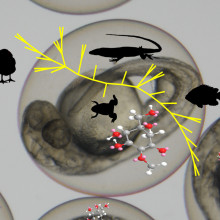
21:56 - Zebrafish make their own sunscreen
Zebrafish make their own sunscreen
with Taifo Mahmud, Oregon State University
We heard earlier about the role of viruses in moving genetic information among  organisms. Perhaps, they also had something to do with this next discovery, which is the finding of a microbial gene in vertebrates that encodes a sunscreen-like chemical in microbes as Oregon State University's Taifo Mahmud explains.
organisms. Perhaps, they also had something to do with this next discovery, which is the finding of a microbial gene in vertebrates that encodes a sunscreen-like chemical in microbes as Oregon State University's Taifo Mahmud explains.
Taifo - We have been working on drug discovery from nature. So, we have been looking at genes that are involved in making natural products that can be used as drug candidates. And then recently, we found genes responsible to make antibiotics or antidiabetic drugs. Most of time, those genes are present in bacteria, but then we accidentally found a similar gene in animals.
Chris - Do those genes then do the analogous job in the vertebrates? Do we know?
Taifo - So far, we don't really know the actual of this compound in fish but gadusol and its related compounds have been known to have very good sunscreen activity. At this point, we believe that animals might use gadusol and other similar compounds to protect them from UV. But there is a possibility that this compound is being used for many different reasons as well - for example, for growing or development of the embryo or as antioxidant, for example.
Chris - Where do you think the fish got these genes from?
Taifo - What we found is that organisms, before vertebrates, they do not have the genes but then fish and amphibian, reptile, and birds, they do have the genes. So, we believe at one point during the evolution, those genes were introduced by microorganisms like algae, for example. Because based on our study, we found two different algaes that have very similar set of genes.
Chris - And how did you investigate what the fish are doing with the genes? In other words, how they're employing the genes and regulating them in their cells?
Taifo - Based on our preliminary study, we found that fish embryo produced the compound. The expression, peaks after 72 hours. So, that's the reason also we thought the compound has something to do with developments.
Chris - Given that you have found that you can express or that these things are naturally expressed in vertebrate cells, are there any potential medical or therapeutic applications that may come from what you've found?
Taifo - Based on what we know about gadusol, it has very good antioxidant properties as well. So, there is a possibility that this compound can be used as a supplements, as well as anti-aging products for example, use in cosmetics. So far, we have not found any antibacterial activity or anticancer activity but obviously, this can be used as cancer-protecting agents.










Comments
Add a comment